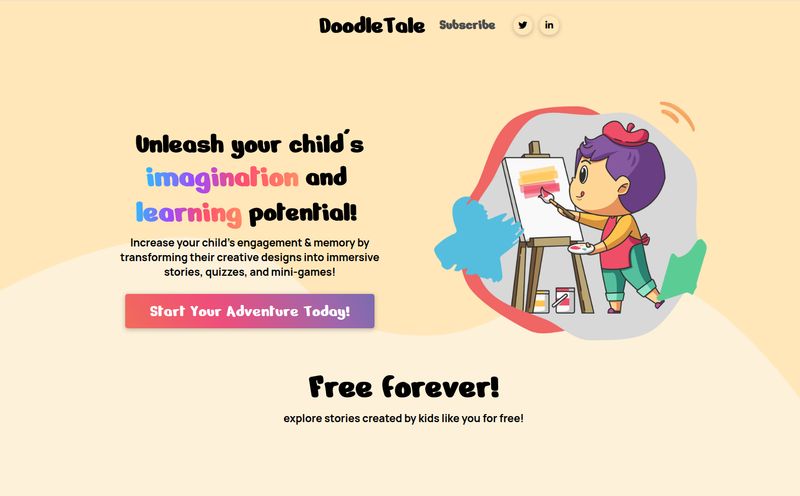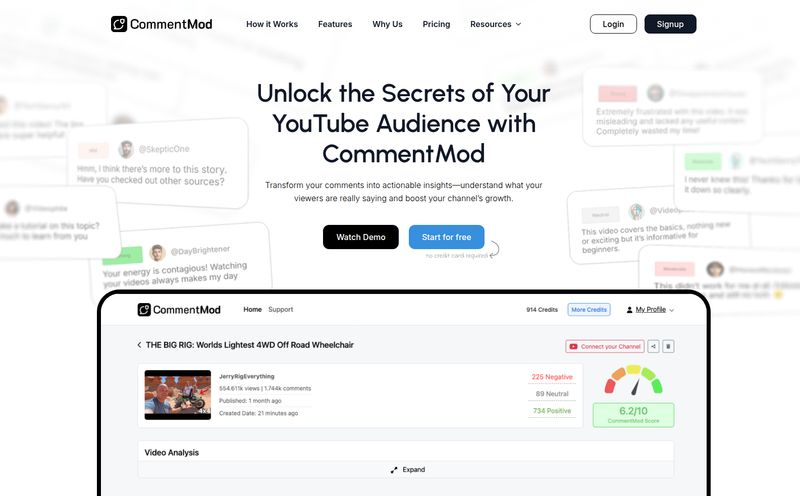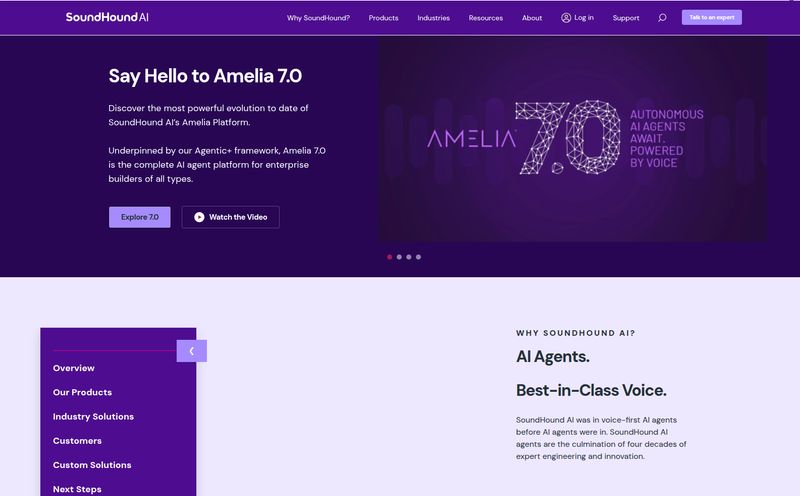Storytime. It’s a sacred ritual in my house. The lights go down, the voices get silly, and for ten minutes, we’re battling dragons or exploring alien planets. As an SEO guy, I spend my days wrestling with algorithms, but at night, I’m all about narratives. So when I first heard about a tool called Ada, my ears perked up. An AI that writes personalized stories for your kids, starring them alongside heroes like Iron Man and Elsa? Sign me up.
The concept is, frankly, brilliant. It’s the kind of thing you dream up but assume the tech isn't quite there yet. But Ada promised to make it happen. It claimed to be an AI Large Language Model trained specifically for one magical purpose: to craft immersive tales that put your child right in the center of the action. Even more, it was supposed to illustrate these triumphs using your kid’s own facial features. What a way to get a reluctant reader excited, right? Making them the literal hero of the story. I was ready to throw my money at the screen.
And then, I went to find it. And that's where our fairytale hits a bit of a snag.
So, What Was Ada Supposed to Be?
Before we get to the mystery, let's talk about the dream. Ada wasn't just another content spinner. It was marketed as a bespoke storyteller for the next generation. Imagine your daughter, Sarah, not just reading about Elsa, but teaming up with her to save Arendelle, with illustrations that actually look like Sarah. Or your son, Leo, helping Iron Man design a new suit to defeat a villain, his own determined face staring back from the page.
This goes beyond simple Mad Libs-style personalization (you know, 'Insert child's name here'). The promise of Ada was a deeper integration, weaving a child's identity into the very fabric of the narrative. In a world saturated with generic content, this kind of personal touch is gold. It’s the difference between watching a movie and starring in one.
The Unique Power of Seeing Yourself in the Story
I’ve always felt that personalization is the key to engagement, whether it’s in an email marketing campaign or a bedtime story. When a child sees themselves as the protagonist, it does more than just hold their attention. It builds confidence. It tells them, “Hey, you can be the hero. You are capable of amazing things.” Research from organizations like the National Literacy Trust consistently shows that children who feel represented in books are more likely to enjoy reading. Ada was poised to take this concept to its absolute zenith.
Where The Magic Fades: The Mystery of the Missing Website
Okay, so here's the rub. After getting all excited about this revolutionary tool, I went to check it out. I searched, I clicked, I was ready to go. And I was met with... this:

Visit Ada AI Storyteller
A simple, soul-crushing “No such website.” An Error 404. The digital equivalent of a dusty, abandoned storefront with a ‘Closed’ sign hanging crooked in the window. It’s a real head-scratcher. All the buzz, all this potential, and the platform is a ghost. It's like finding a map to a magical kingdom, only to arrive and find a parking lot. What happened? Was it a brilliant idea that couldn't secure funding? A technical hurdle they couldn't overcome? Or maybe a cease and desist from a certain massive entertainment company's legal team? Who knows. The trail has gone cold.
The Features That Promised a Fairytale
Let's pour one out for what could have been. Based on the information I could dig up, Ada was built on a few incredible-sounding pillars.
First, the hyper-personalization was the main event. The ability to use a child's facial features for illustrations is a serious game-changer. Second, the integration of world-famous characters like the Hulk and Captain America. This is a double-edged sword, of course. On one hand, it's an incredible hook for kids. On the other, as an industry professional, my first thought is, 'How did they handle the licensing for that?' This might be a clue to its disappearance. Big companies are famously protective of their IP. Finally, it was all supposed to be wrapped in an easy-to-use interface, allowing even the most tech-averse parent to become a master storyteller.
What About the Cost of Magic?
Unsurprisingly, with no website, there's no pricing page. Information on whether Ada was planned as a subscription service, a one-time purchase model, or a pay-per-story system is nowhere to be found. It remains one of the many unanswered questions in the curious case of this phantom platform.
The AI Storyteller Trend Is Still Alive and Well
While Ada might be a digital ghost ship, the ocean it sailed on is getting more and more crowded. The dream of AI-assisted storytelling for kids is far from dead. If the idea of Ada got you as excited as it got me, don't despair! There are other places to turn.
Platforms like Storybird have been using art to inspire stories for years, and now they're incorporating AI to help flesh out ideas. Even using a tool like ChatGPT with a very specific, creative prompt can yield some amazing results. For example, you could try a prompt like: "Write a short, funny bedtime story for a 6-year-old named Lily who loves dinosaurs and baking. The main character should be a T-Rex who is trying to bake a birthday cake but his little arms make it difficult. The story should have a happy ending and a lesson about asking for help."
The results can be surprisingly heartwarming and creative. It might not have the slick illustration feature Ada promised, but the core of personalized narrative is still there. The magic is still possible, you just might have to be the wizard yourself.
Frequently Asked Questions About Ada AI
- What was Ada AI Storyteller supposed to be?
- Ada was an AI platform designed to create personalized children's stories. It aimed to make the child the main character in adventures with famous characters, and even use the child's facial features in the story's illustrations.
- Is the Ada AI Storyteller website still active?
- No. As of late 2023 and into 2024, the website appears to be defunct, returning a "No such website" error. The platform is not currently accessible.
- What happened to Ada AI?
- It's unclear. The project seems to have been abandoned. Speculation ranges from funding issues and technical challenges to potential copyright problems over its use of popular characters like Iron Man and Elsa.
- Why is personalized storytelling good for kids?
- Personalized stories can significantly boost a child's engagement and interest in reading. Seeing themselves as the hero can build self-esteem, improve reading comprehension, and make reading a more active and exciting experience.
- Are there good alternatives to Ada AI?
- Yes! While no tool seems to offer the exact same feature set (especially the facial feature illustration), parents can use other AI platforms like Storybird or even ChatGPT with creative prompts to generate unique, personalized stories for their children.
- Could you really use characters like The Hulk in Ada?
- According to its initial description, yes. However, using licensed characters without permission is a major legal issue, which may have contributed to the platform's disappearance.
A Story With an Unwritten Ending
So, Ada AI remains an enigma. A brilliant flash of an idea that, for whatever reason, fizzled out before it could truly shine. It serves as a potent reminder that in the fast-moving world of tech, not every amazing concept makes it to the finish line. I, for one, will keep an eye out. Maybe one day, Ada or a tool like it will reappear, ready to finally turn our kids into the heroes of their own digitally-illustrated, epic tales. Until then, it’s back to the old-fashioned way. And you know what? That’s still pretty magical too.
References and Sources
- National Literacy Trust: https://www.theliteracytrust.org
- Storybird: https://storybird.com/



